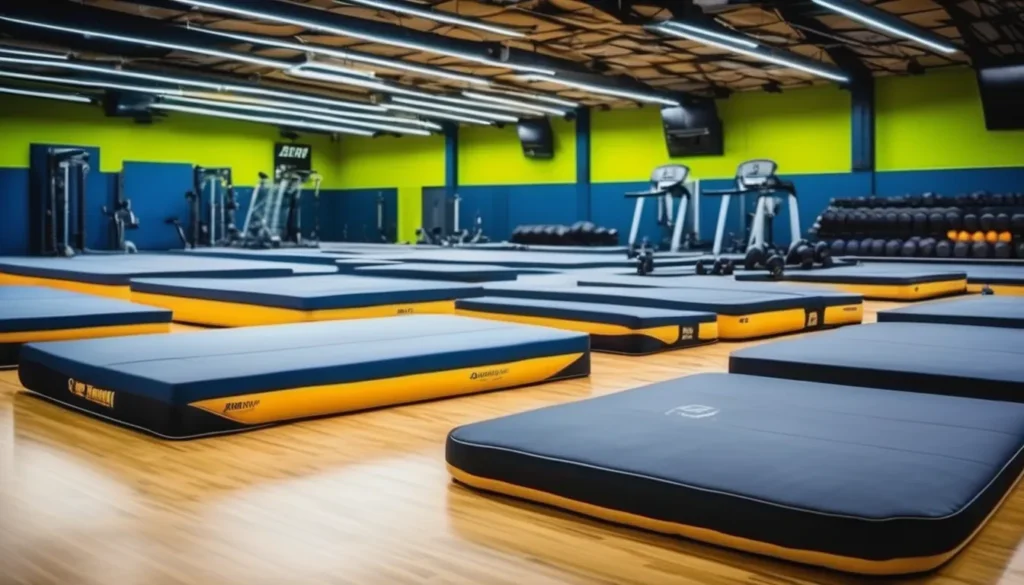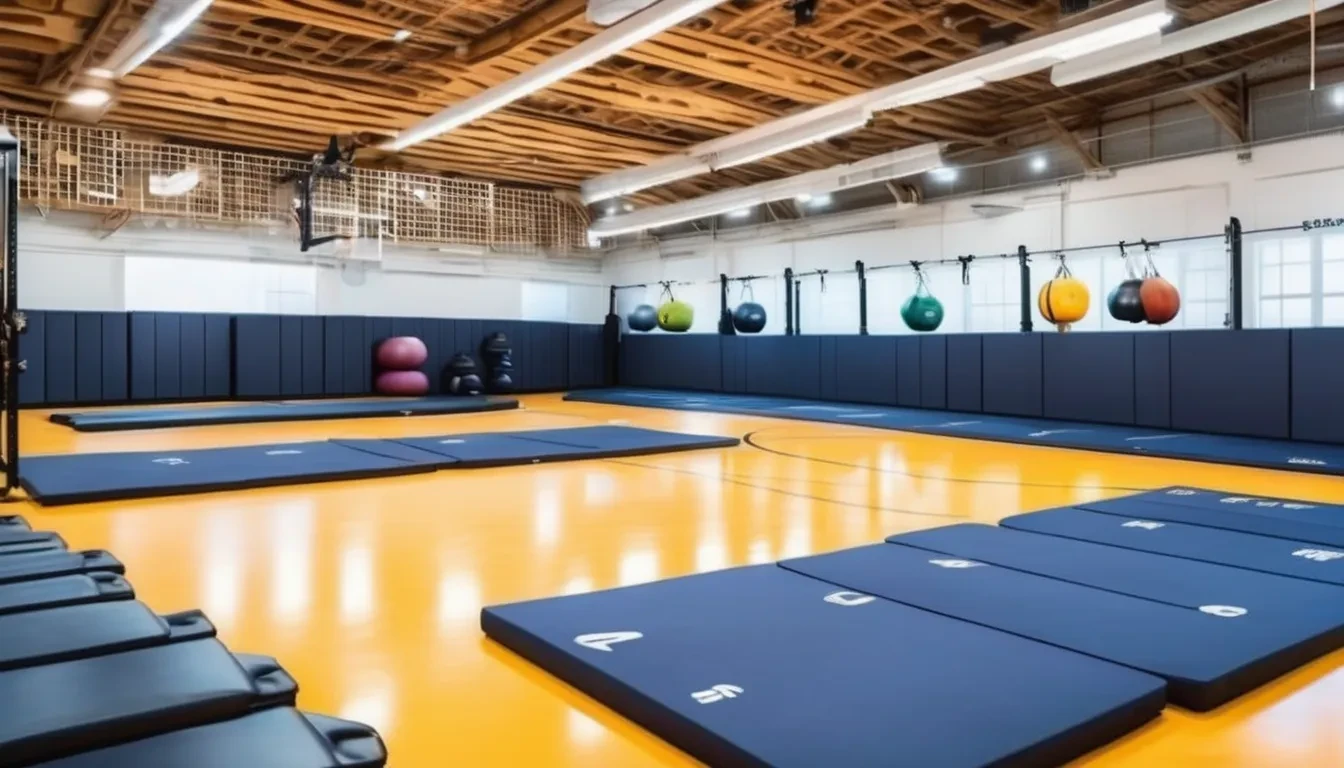If you are designing a home gym or establishing a professional fitness studio, choosing the right gym mattress is extremely crucial. A quality gym mattress keeps you more comfortable, secure, and safe during exercise. A good gym mattress also saves your joints, improves your performance, and prevents injuries. You have numerous choices, and it may be difficult to choose one. This guide will help you choose the ideal gym mattress based on your fitness needs, workout type, available space, and your budget.
Why a Good Gym Mattress Matters
A gym mattress is not just a foam. It is used for a variety of purposes:
- Shock absorption: Minimizes joint shock in high-impact movements.
- Stability: Offers a stable surface for pilates, yoga, strength training, or HIIT.
- Durability: Withstands normal wear and tear, sweat, and equipment.
- Hygiene: Easy-to-clean surfaces keep your workout environment healthy.

Important Things to Keep in Mind When Selecting a Gym Mattress
1. Type of Exercise You Will Do
Various exercises require various types of support and padding.
- Yoga or Pilates: Select thinner, denser foam mats that offer grip and support.
- Weight Training: Choose sturdy, heavy-duty mats that are capable of bearing weights dropped onto them.
- HIIT or Aerobics: Choose shock-absorbing, non-slip gym mattresses that reduce joint impact.
Martial Arts and Gymnastics: Both of these sports need thick shock-absorbing mats for safety.
2. Material Quality
The substance decides on durability, comfort, and support. Typical materials are:
- EVA Foam: Strong, light, and shock-absorbing; perfect for home gyms.
- PVC or Vinyl Covers: Mostly used in commercial environments due to strength and hygiene.
- Rubber Mats: Suitable for high-impact activity and weight stations.
Seek odor-free, sweat-resistant, and non-toxic material for the most effective workout.
3. Thickness & Density
- Thickness: It ranges from 6mm to over 2 inches. Thin mats are appropriate for light exercise, but thicker mats are appropriate for hard exercises or high-impact training.
- Density: Firm support is offered by high-density foam, while low-density mats provide more cushioning.
For most general-purpose workouts, 1–1.5 inches of thickness and high-density material is a sufficient compromise.
4. Size and Portability
Take measurements of your exercise area before purchasing. Standard gym mattresses range from:
- Small (2’x4′) – Ideal for crammed workouts or stretching.
- Medium (4’x6′) – Suitable for most personal training.
- Large (6’x8′ and over) – Used for group exercise or gymnastics.
If you plan to move your mat often, opt for foldable or rollable designs that are easy to carry and store.
5. Grip & Anti-Slip Surface
A bed in the gym should not move while working out. Check for:
- Textured finishes to offer additional grip.
- Rubber bottoms prevent slipping on smooth floors.
- Anti-tear design for longevity.
Good grip keeps you safe when doing fast exercises like burpees or mountain climbers.
6. Easy to Clean
Sweat and dirt can build up fast. Opt for a gym mat that is:
- Waterproof or water-resistant
- Simple to wipe down
- Antibacterial or mold-resistant
This keeps your mat clean and makes it last longer.
7. Budget and Brand Reputation
Gym mats vary from budget-friendly home-use models to high-end professional-quality mats. Don’t settle for quality at the expense of price—spend on reliable brands that provide:
- Good warranties
- Positive feedback
- Quality materials
Some popular brands include BalanceFrom, Gorilla Mats, ProsourceFit, and Rogue Fitness.
Best Gym Mattresses Based on Workout Types
| Workout Type | Recommended Thickness | Material Suggestion |
|---|---|---|
| Yoga/Pilates | 0.5 – 1 inch | EVA Foam or TPE |
| Weight Training | 1 – 2+ inches | High-Density Rubber |
| Cardio/HIIT | 1 – 1.5 inches | Non-Slip EVA or Rubber |
| Gymnastics/MMA | 2+ inches | PU Foam with Vinyl Cover |
Tips for Long-Lasting Gym Mattress Use
- Always wash after use.
- Shun shoes with pointed soles.
- Store in a cool, dry place.
- Use mat covers if available.
- Swap usage areas to prevent premature wear.

FAQs: Selecting and Utilizing Gym Mattresses
Q1: What is the ideal thickness of a gym mattress?
A: For overall exercise, 1 to 1.5 inches is ideal. For intense exercise like gymnastics or martial arts, more than 2 inches is ideal.
Q2: Are you allowed to use yoga mats as gym mats?
A: Yoga mats are excellent for low-impact exercise but do not provide the support and shock protection necessary for weightlifting or HIIT.
Q3: Are gym mattresses appropriate to be used outdoors?
A: Yes, if it is waterproof and UV-resistant material. Rubber or PVC-coated mats can be used outdoors.
Q4: How do I clean and maintain my gym mattress?
A: Clean with a gentle detergent solution after each use. Do not soak unless the mat is waterprooof. Dry before storage.
Q5: How big of a gym mat should I purchase for a home gym?
A: A 4’x6’ mat is usually enough for personal use, but larger spaces might require multiple interlocking mats or larger roll-out options.
Final Thoughts
Choosing the perfect gym mat depends on what you do, how much you spend, and how much space you have. A good mat does you well in your workout journey by safeguarding you, making you comfortable, and allowing you to concentrate. Whatever you do – weightlifting, yoga stretching, or plunging into HIIT, your perfect gym mat matters. If you want to get this product visit on Done My Deal.



